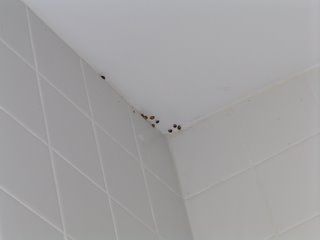A year ago I was in Providence on the Wednesday before Halloween, which happened to be the day the Red Sox won the World Series. I thought about it the other evening, after the Sox lost.
I was there for a conference and had gone to dinner at a place called Al Forno, which is fairly well-known. Al Forno is on the east side of the river that divides the city. Afterwards I found my way back to my hotel by honing in on the red neon “Biltmore” sign on top of the Biltmore Hotel, a block away from the place I was staying at, the Westin.
I turned on the game and checked the minibar. I called home, then got undressed and watched the first inning. The Red Sox immediately scored a run. I knew I didn’t want to watch the game alone, so I got dressed again and traced a route across I-95 to Atwells Avenue, a broad street lined with restaurants and bars and food shops, not to mention two or three tattoo parlors.
As I passed each bar I peered through the door or window, to see if the game was on and if it was the kind of place I’d want to watch in. A door to one of the bars opened and three guys tumbled out onto the sidewalk, looking into the sky and talking about the lunar eclipse. I looked up too. The moon was growing dark and clouds were passing in front of it.
I kept walking. A fellow on the street said to me, “Did you see the eclipse?”
“Yes,” I said. “But what I’m really looking for is a place to watch the game.”
“Opa,” he said.
“Opa? Is that a bar or restaurant?”
“Yes,” he said.
He pointed back down Atwell’s and said it was across the street. I started to walk toward it.
Opa was a small restaurant with a small bar. The tables were taken up by people eating leisurely meals, men mostly, many of them smoking cigars. The woman behind the bar asked me pleasantly if I wanted something to eat. I explained that I really just wanted to watch the game, and I ordered a club soda. The only untaken stool at the bar was behind a pillar and I had to bend around it to see the television.
Two young women with dark hair came in and sat next to me.
“What do you want to drink, honey?” the bar woman said. She added, “You see the moon?”
“We were just at the beach – couldn’t see much,” said the woman who was next to me.
“You guys going out tonight?” the bar woman asked.
“We just came from a – a friend died. We were at a service at the beach.”
“What did he die of?”
“Killed himself.”
The woman who had been at the beach asked for some bread; the barwoman brought her a plate of flat bread cut into triangles and some dark sauce to dip it into.
At the nearest table to me, six guys were eating a big meal and smoking cigars, enjoying themselves, watching the game. The owner brought them a big, beautiful whole fish.
One of the guys at the table put a piece of fish on his fork, got up, and approached the fellow sitting at the bar to my left.
“This is the whitest fish I’ve ever tasted – it’s so white,” he said with much admiration, and offered him the fork. They had caught the fish themselves and the chef at Opa had cooked it for them.
The bar woman brought the women on the other side of me a dish of something with lots of melted cheese. The woman farther away from me offered a taste to the woman next to me.
“Oh my God,” she said. “That sticks right to your otteries.”
The Red Sox took a 3-0 lead, and the Cardinals were not even hitting the ball hard. The Red Sox fans at Opa grew more relaxed. In the eighth inning, Trot Nixon hit a double and the fans were feeling confident.
“Who we playing next?” one fan called out.
“God,” another answered.
A third said, “Bring Schiraldi in.”
This made me laugh. Calvin Schiraldi was the relief pitcher who lost to the Mets in the 10th inning of the sixth game of the 1986 World Series, when the Red Sox were winning by two runs and had two outs on the Mets and two strikes on the batter.
As we watched at Opa, the Red Sox did not score again, but neither did the Cardinals.
The game ended and I could sense true happiness in the room – much hugging and cheering and shaking hands. The owner of Opa opened three or four bottles of bubbly and gave everyone a glass. I clinked glasses with the guys who ate the big fish. I told them I was a Mets fan but that I was glad the Sox won.
The woman sitting to my right took out her phone and made a call.
“They did it,” she said to her mother. “Grandpa must be so happy.”
The night was warm, and I walked back along Atwells, stopping to buy a slice of pizza to eat as I walked. I looked at my watch. Midnight. Helicopters were flying overhead. People were running through the streets – not mobs, not throngs, but happy groups. Horns were blowing throughout the city. A young man, full of energy, ran past me.
“Let’s go Red Sox, baby,” he called out, and stuck a cigar in his mouth.
“Let’s go Red Sox,” I responded.
“Better hurry up,” he said as he ran off. “The bahs are closing.”






